
Samsung Electronics Co Ltd
KRX:005930


| US |

|
Johnson & Johnson
NYSE:JNJ
|
Pharmaceuticals
|
| US |

|
Berkshire Hathaway Inc
NYSE:BRK.A
|
Financial Services
|
| US |

|
Bank of America Corp
NYSE:BAC
|
Banking
|
| US |

|
Mastercard Inc
NYSE:MA
|
Technology
|
| US |
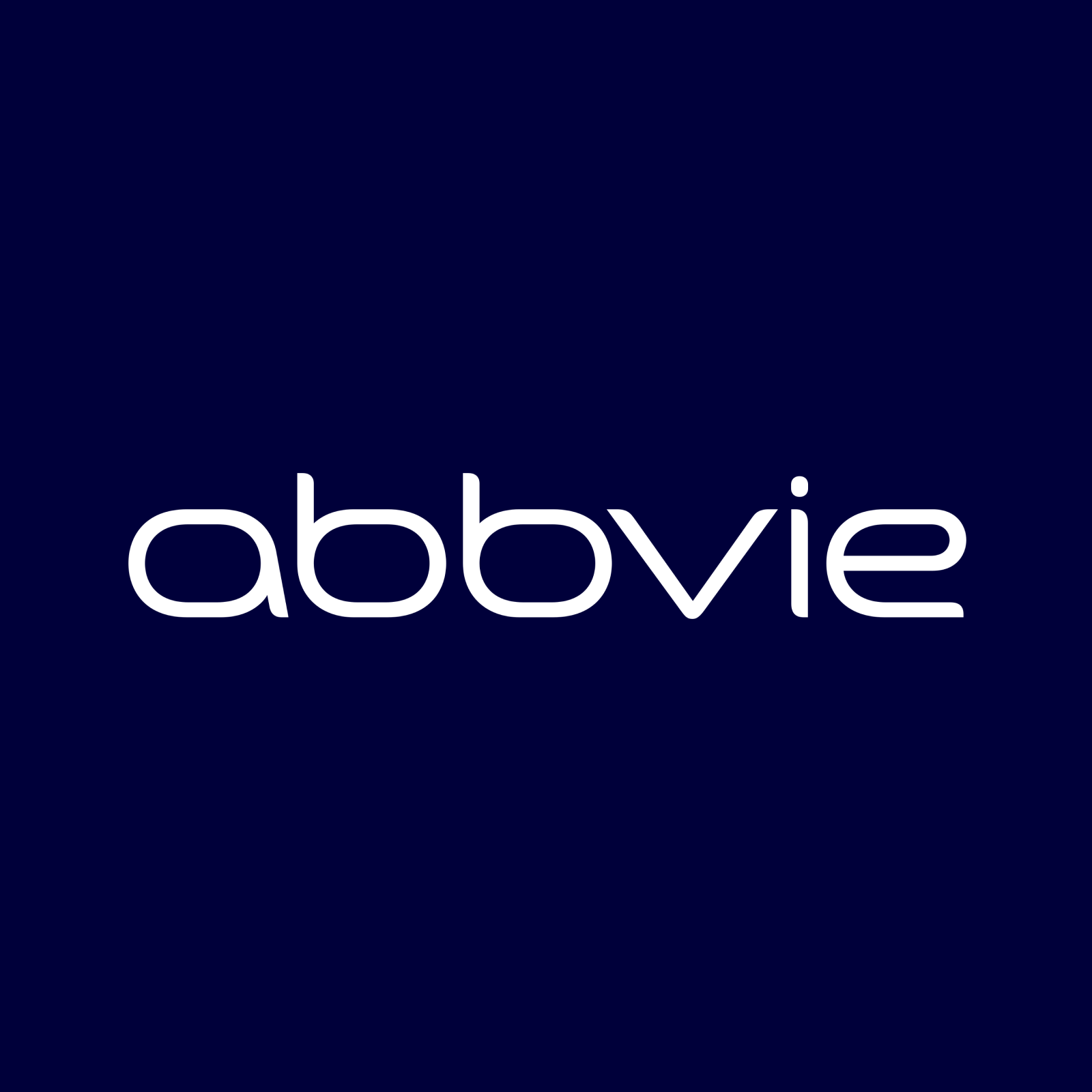
|
Abbvie Inc
NYSE:ABBV
|
Biotechnology
|
| US |

|
Pfizer Inc
NYSE:PFE
|
Pharmaceuticals
|
| US |

|
Palantir Technologies Inc
NYSE:PLTR
|
Technology
|
| US |

|
Nike Inc
NYSE:NKE
|
Textiles, Apparel & Luxury Goods
|
| US |

|
Visa Inc
NYSE:V
|
Technology
|
| CN |

|
Alibaba Group Holding Ltd
NYSE:BABA
|
Retail
|
| US |

|
3M Co
NYSE:MMM
|
Industrial Conglomerates
|
| US |

|
JPMorgan Chase & Co
NYSE:JPM
|
Banking
|
| US |

|
Coca-Cola Co
NYSE:KO
|
Beverages
|
| US |
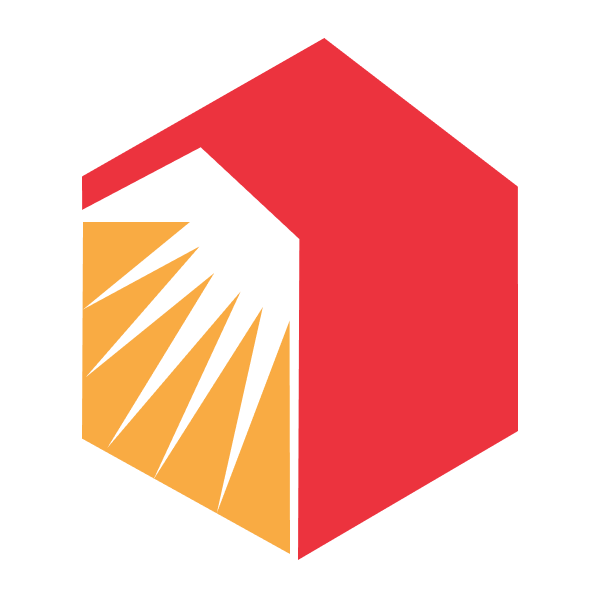
|
Realty Income Corp
NYSE:O
|
Real Estate
|
| US |

|
Walt Disney Co
NYSE:DIS
|
Media
|
| US |

|
PayPal Holdings Inc
NASDAQ:PYPL
|
Technology
|
Utilize notes to systematically review your investment decisions. By reflecting on past outcomes, you can discern effective strategies and identify those that underperformed. This continuous feedback loop enables you to adapt and refine your approach, optimizing for future success.
Each note serves as a learning point, offering insights into your decision-making processes. Over time, you'll accumulate a personalized database of knowledge, enhancing your ability to make informed decisions quickly and effectively.
With a comprehensive record of your investment history at your fingertips, you can compare current opportunities against past experiences. This not only bolsters your confidence but also ensures that each decision is grounded in a well-documented rationale.
Do you really want to delete this note?
This action cannot be undone.

| 52 Week Range |
66 000
87 800
|
| Price Target |
|
We'll email you a reminder when the closing price reaches KRW.
Choose the stock you wish to monitor with a price alert.

|
Johnson & Johnson
NYSE:JNJ
|
US |

|
Berkshire Hathaway Inc
NYSE:BRK.A
|
US |

|
Bank of America Corp
NYSE:BAC
|
US |

|
Mastercard Inc
NYSE:MA
|
US |

|
Abbvie Inc
NYSE:ABBV
|
US |

|
Pfizer Inc
NYSE:PFE
|
US |

|
Palantir Technologies Inc
NYSE:PLTR
|
US |

|
Nike Inc
NYSE:NKE
|
US |

|
Visa Inc
NYSE:V
|
US |

|
Alibaba Group Holding Ltd
NYSE:BABA
|
CN |

|
3M Co
NYSE:MMM
|
US |

|
JPMorgan Chase & Co
NYSE:JPM
|
US |

|
Coca-Cola Co
NYSE:KO
|
US |

|
Realty Income Corp
NYSE:O
|
US |

|
Walt Disney Co
NYSE:DIS
|
US |

|
PayPal Holdings Inc
NASDAQ:PYPL
|
US |
This alert will be permanently deleted.
 Samsung Electronics Co Ltd
Samsung Electronics Co Ltd
Earnings Call Analysis
 Q2-2023 Analysis
Samsung Electronics Co Ltd
Q2-2023 Analysis
Samsung Electronics Co Ltd
The company faced a bumpy ride in the second quarter with a sequential 5.9% decline in consolidated revenue, settling at KRW 60 trillion, majorly attributed to reduced smartphone shipments. However, there was a silver lining as the gross profit rose by KRW 0.6 trillion quarter-on-quarter, thanks to high-value product sales and decreased inventory valuation losses in Memory, reflecting in a gross margin increase of 2.8 percentage points to 30.6%. SG&A expenses, however, spiked by the same amount to KRW 17.7 trillion.
The earnings story had subtle twists with a minor climb in operating profit to KRW 0.7 trillion despite the smartphone slump. This was possible due to the DX division narrowing its losses and improvements in both display and digital appliances profitability areas, buoyed by a mix of enhanced cost structure and operational efficiency.
Global reach came with its own set of challenges, particularly in North America and Japan where revenue showed a downturn. Even against this backdrop, the Digital Appliances business surged in profitability, banking on premium products and cost management. Notably, Harman, specialized in audio products, also contributed to growth and clinched the largest automotive order in history.
Hidden.
Hidden.
Hidden.
Hidden.
Hidden.
Hidden.
Hidden.
Hidden.
Hidden.


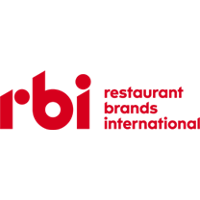
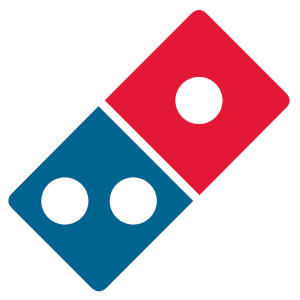

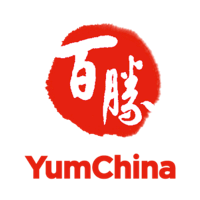

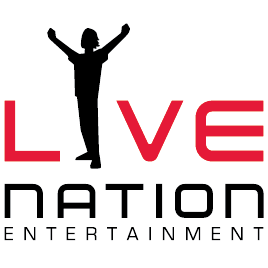

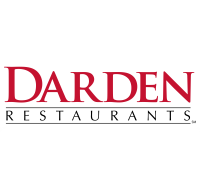
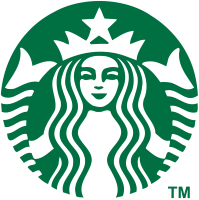
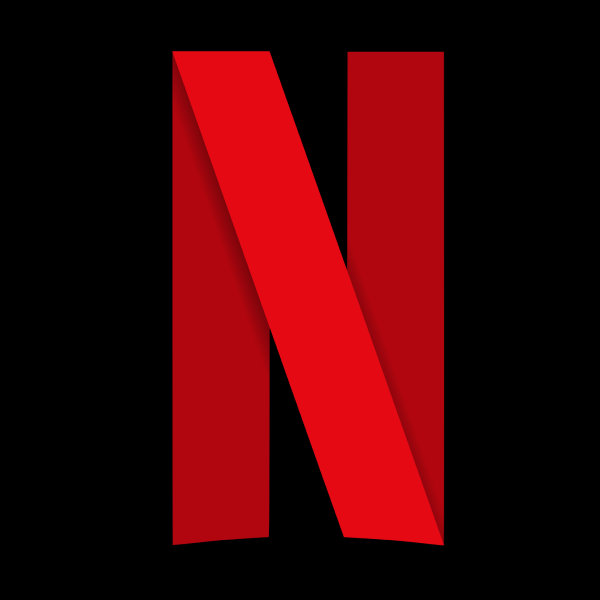




 You don't have any saved screeners yet
You don't have any saved screeners yet

Good morning and good evening. Thank you all for joining this conference call. And now we will begin the conference for the fiscal year 2023 second quarter earnings results by Samsung Electronics. [Operator Instructions]. Now we shall commence the presentation on the fiscal year 2023 second quarter earnings results by Samsung Electronics.
Welcome, everyone. This is Ben Suh, Head of Investor Relations. Thank you for joining Samsung Electronics' Second Quarter 2023 Earnings Call. For additional details regarding our quarterly results, please refer to our earnings presentation which is available on our IR website at www.samsung.com/global/ir.
Joining me on the call today are EVP, Jaejune Kim, representing Memory. VP, Hyeokman Kwon for System LSI; EVP, Gibong Jeong for Foundry; EVP, Casey Choi for Samsung Display Corp., which I will refer to as Display during today's call. VP, Daniel Araujo for Mobile eXperience and VP, KL Roh for Visual Display.
I want to remind you that some of the statements we will be making today are forward-looking statements based on the environment as we currently see it. They are subject to certain risks and uncertainties that may cause our actual results to be materially different from those expressed in today's discussion.
I will start with our results for the second quarter of 2023. Although we delivered a slight recovery in revenue for the DX division in the second quarter, consolidated revenue declined 5.9% sequentially to KRW 60 trillion, mainly due to a decreased smartphone shipment number. Consolidated gross profit increased to KRW 18.4 trillion, up KRW 0.6 trillion quarter-on-quarter due to our continued focus on sales of high value-added products as well as reduced inventory valuation losses in Memory. Gross margin also increased sequentially, rising 2.8 percentage points to 30.6%.
SG&A expenses increased by KRW 0.6 trillion quarter-on-quarter to KRW 17.7 trillion despite the drop in revenue, primarily due to investments in R&D. As a percentage of sales, SG&A expenses increased by 2.7 percentage points to 29.5%. R&D expenses hit a record high for the third quarter in a row as we continue to invest for the future, even amid a very challenging business environment.
Operating profit increased slightly quarter-on-quarter to KRW 0.7 trillion despite a decline in smartphone shipments, mainly as DX narrowed its losses and display and digital appliances improved their profitability.
I will now provide high-level overviews of our results and outlooks and representatives of the business units will provide more details following my presentation. For the DX division in Memory, we improved our results quarter-on-quarter as our preparations for robust demand for AI-centric products such as HBM and DDR5 led to higher-than-guided DRAM shipments. However, our system semiconductor businesses saw a profit decline due to lower utilization rates attributable to sluggish demand from main applications.
For Display, the mobile panel business reported similar profit sequentially, even in the seasonally weak second quarter, thanks to solid sales centering on premium panels. The large panel business continue to focus on expanding QD-OLED's presence in the premium market. Despite continuing overall weak demand, the DX division achieved strong profitability mainly due to increased sales of premium TVs and digital appliances, and improved cost structure and enhanced operational efficiency.
For the network business, revenue declined in major overseas markets including North America and Japan. The Digital Appliances business improved its profitability amidst strong seasonality mainly attributable to increased sales of premium products and lower costs, including shipping. Harman reported growth in both revenue and profits, bolstered by consumer audio demand which centered on portable and KWS products and via cost management throughout the businesses. Harman also continued to solidify its foundation for strong growth by winning the largest automotive order ever in its history.
In terms of currency, the Korean 1 showed weakness against the U.S. dollar, the euro and major emerging currencies in the second quarter. This resulted in an effective gain in operating profit compared to the previous quarter in both the component and the finished product businesses.
Next, I would like to share our business outlook for the second half of the year. We expect global IT demand in the business environment to recover gradually, driving improved results especially in our component businesses. However, challenges associated with a demand recovery are also likely to persist due to macro risks and other factors.
For the DX division, amid expectations of a gradual recovery in demand as inventory adjustments wind down, we will focus on sales of high value-added products such as DDR5 and LPDDR5X and HBM while securing new orders. At the same time, we will continue to strengthen mid- to long-term competitiveness and secure future growth by continually increasing investments in infrastructure, R&D and packaging, while also enhancing the completeness of the gate all around process in Foundry.
However, we do need to monitor the possibility of continued customer inventory adjustments, especially for legacy memory products. In Display, we expect the mobile panel business in the second half to deliver improved results by fully preparing for the launches of new smartphone models by major customers. The large panel business plans to actively address year-end seasonal demand, mainly by increasing the supply of super big panels. The DX division will sustain solid profitability with successful launches of new major models such as foldables and wearables, and by increasing sales of premium TVs and digital appliances.
Network will seek to grow revenue by winning new projects, all while reinforcing its technology leadership in 5G core chips in software-based virtualized radio access networks. For Digital Appliances, we will continue to BESPOKE global expansion and increased operational efficiencies while growing sales of eco-friendly and high-efficiency products featuring energy savings mode under smart things. We expect Harman to post improved profitability on the back of expanding sales of consumer audio products during strong seasonality as well as through ongoing improvements in cost efficiencies, including from materials and shipping.
Moving on to capital expenditures. CapEx in the second quarter was KRW 14.5 trillion, with KRW 13.5 trillion invested in the DX division and KRW 0.6 trillion in Display. For the first half of the year, total CapEx was KRW 25.3 trillion with KRW 23.2 trillion invested in the DX division and KRW 0.9 trillion in Display. Similar to the previous quarter, Memory CapEx concentrated on facilities in Kentek which included completing P3 infrastructure and P4 framework progress for mid- to long-term supply and also on equipment to prepare for advanced node demand.
In addition, we continued our R&D and back-end investments to further bolster future competitiveness.
Foundry investments continue to focus on Taylor, Texas and Pantech to address the demand for advanced nodes, while display investments remain focused on infrastructure and module production enhancements.
Next, I would like to address the second quarter dividend. Today, the Board of Directors approved a quarterly dividend of KRW 361 per share for both common and preferred stocks. Based on the annual dividend payout under the current dividend policy, the total quarterly payout is KRW 2.45 trillion, which will be paid in mid-August.
Finally, in sustainability, I will summarize some of the key items from our sustainability report 2023, which was released in June. Regarding the environment, the DX division completed its transition to 100% renewable energy at all DX operational sites in Korea and at our manufacturing bases in Vietnam, India and Brazil. We also increased our use of plastic with recycled resins by 3x to reinforce resource circularity.
In the DX division, we continually increased the number of installations of our regenerative catalytic system, an integrated greenhouse gas treatment facility and reduced the use of semiconductor process gases. Through these efforts, we lowered our greenhouse gas emissions by 10.16 billion tonnes and on a corporate level reached a renewable energy transition rate of 31%.
On the human rights front, the company established Samsung's Global Human Rights Principles, a policy based on international standards, which we announced in February. And we ranked second in the ICT manufacturing sector in the most recent corporate human rights benchmark and assessment of human rights management at global companies as measured by the World Benchmarking Alliance, a global alliance for sustainability. For more details, please refer to the sustainability report 2023, which is available on our sustainability website and via disclosure website DART and kind.
I will now turn the conference call over to the representatives from each business unit to present second quarter performances and outlooks for their respective business segments in more detail. We will start with EVP, Jaejune Kim of the Memory business. Thank you.
Good morning. This is Jaejune Kim from Memory Global Sales and Marketing. The memory demand in the second quarter showed some different aspects for each application. For servers, due to strong demand for generative AI, investment from data center area was concentrated on AI service in limited CapEx. As a result, our demand for general servers and storage was relatively limited. And in particular, given our continued inventory order by server customers, overall processor demand has not yet recovered. However, our consumer-oriented applications such as TCM Mobile showed relatively stable demand, with customers having made substantial progress with their inventory [indiscernible] as expected.
In this situation, we achieved the growth guidance despite the limited price drop for both DRAM and NAND. As a result, our Q2 performance has been improved compared to the previous quarter, and it was confirmed that our inventories for both DRAM and NAND also picked out in May.
Looking at each product, in the case of DRAM, we exceeded the growth guidance by expanding our sales and application of consumer, graphic and automotive in addition to expanding sales focusing on servers. For server applications, in particular, our analysts indicated that our supply growth for server exceeded that of the industry. Thanks to our overall sales expansion and active response to rising demand for DDR5 and HBM for generative AI application.
For NAND, while continuously strengthening our cost competitiveness by expanding the portion of cutting edge node, we actively responded to the demand, for -- especially for a flagship smartphone with our competitiveness in UFS for that. In addition, we achieved big growth guidance by increasing sales of gaming devices, branded products for retail and so on. Meanwhile, the price decreased by a percentage in the mid- to high single digit, which is considerably less than the high teens decline shown in the previous quarter.
Now let me tell you about the market outlook for the second half of the year. We expect that the market will be getting stable in the second half, considering increasing production costs in the industry, while inventory by customers are likely to wind down, especially in mobile and PC applications with the normalization of major customer set inventory levels, said demand is expected to improve due to the launch of a new smartphone and PC promotion in the second half of the year.
In addition to this, for Memory, we expect to see a continuation of the trend towards high density based on price elasticity. In sub application, although customer inventory orders began relatively late compared to mobile and PC, inventories are likely to become increasingly depleted in the second half of the year. Therefore, we expect server demand to recover gradually and by product demand for DDR4 product as well as DDR5 is also expected to gradually improve compared to the first half of the year. Given this, we expect to see a gradual recovery of the memory market in the second half of the year, but the pace of the market rebound is likely to depend on our macro variables.
Thus, based on supply flexibility linked to market condition in the second half, we will optimize our portfolio by focusing on high value-added and high-density products, especially to strengthen leadership in high-performance service and mobile flagship segments in DRAM, we will accelerate the increase in the portion of leading-edge products such as DDR5, DDR5 and HBM. Additionally in that, while expanding the portion of nodes, such as V7 and V8, we will actively respond to demand for new interface such as PCI Gen 5 for servers and UFS support on all for flagship mobile device. Thank you.
Good morning. This is Hyeokman Kwon from the System LSI Business. In the second half, demand for premium smartphones with low price and sensitivity was solid under the influence of the economic downturn and inflation. But demand in other segments continues to be sluggish. As a result, there was a delay in the recovery of semiconductor demand, and we posted our expected improvement in our performance due to inventory adjustments by customers. Despite the difficulty situation, we will receive design automotive sources with a domestic OEM for their 2025 premium model. And we continue to work to expand the associate application and strengthen business competitiveness their active discussion regarding mid- to long-term cooperation with European customers.
In addition, we are expanding our applications in the security business into fingerprint authentication cards and in the power business to better manage the system worldwide, building various other business spaces.
In the second half, although the recovery of demand for major applications such as mobile has been delayed due to weak consumer sentiment caused by inflation and high interest range and weak impact China in the opening. We expect to improve our performance over rebounding demand for parts, such as SoC and DDIs driven by peak seasonality. And as inventory by customers are coming to an end.
Also for mobile services, we are seeking to resume supplying major customers by securing product performance, product privacy model and will continue to make effort to secure new business solutions beyond the smartphone while strengthening cooperatively our relationships. In addition, automotive resources will continue to diversify their applications by winning other orders per project in 2026 from OEMs in Europe. Thank you.
Good morning and good evening. This is Gibong Jeong from the Foundry business unit. Our revenue for the second quarter showed a quarter-on-quarter increase, but experienced a year-on-year decrease. This trend was influenced by global economic conditions and ongoing inventory adjustment made by our customers, which subsequently weakened the demand for major applications such as mobile and PC products among end users.
Gross margin faced significant challenges, mainly reflecting lower capacity utilization due to fab expansion and anticipated uncertainties in short-term demand. To manage profitability in 2023, we will prioritize cost improvement efforts while consistently highlighting the value of our products and services. Despite near-term inventory cycle, our commitment to supporting customers' growth remains solid. We will continue to work closely with our customers to plan our long-term capacity.
Our long-term capacity is expected to be filled by the industry megatrends of HPC and 5G. The current increase in AI-related demand is driving the greater need for performance and energy-efficient computing, leading to our requirement for advanced node processes. Our GAA technology enables us to offer customers with optimal performance, power efficiency and cost effectiveness. This perfectly meets the rising demand for energy-efficient computing. We are witnessing significant customer interest and engagement in GAA coming from both HPC and 5G applications.
Last year, we commenced mass production of 3-nanometer GAA products. And presently, our third product using the 3-nanometer GAA process is also in mass production. Simultaneously, we are developing the second generation of 3-nanometer GAA technology as per our plans. Additionally, the development of our 2-nanometer GAA technology is on track and progressing well with mass production scheduled for 2025. Last month, we achieved successful events with the SFF, Samsung Foundry Form and SAFE form 2023 held in the U.S. and Korea. These events serve as platforms to present our process road map and various technological innovations.
Notably, we launched a multi-die integration alliance in collaboration with ecosystem partners, aiming to promote advanced packaging technology and deliver all-in-one solutions. During the second half of the year, there remains significant uncertainty surrounding the market's recovery intensity, primarily due to geopolitical risks, slower-than-expected demand recovery, and ongoing customer inventory adjustments. However, we anticipate gradual improvement in demand as consumer sentiment rebounds, inflation eases and customers complete inventory adjustments at a healthier and more sustainable level.
We established a solid foundation for growth we will focus on advancing the development of our GAA technology with optimal performance and energy efficiency. Simultaneously, we are committed to expanding our product portfolio by continually developing mature processes like 8-nanometer EM ramp as well as 8-inch technologies tailored for automotive applications.
This concludes my key messages from the Foundry business unit. Thank you.
Good morning. I'm Casey Choi from the Corporate Rate Team at Samsung Display. I will now brief you on our results for the second quarter of 2023. Amid high inflation and economic downturn, market conditions in the second quarter remained unfavorable across the board, including for the display industry. With the mobile display business, despite a decline in market demand for smartphones, our strategic customers achieved stable results in the premium product segment. We maintained our market share and generated similar results quarter-on-quarter by supplying OLED panels equipped with a differentiated performance and technology.
For the large display business, we improved our business fundamentals by continuing to enhance yield and productivity with a focus on high value-added products, centering on those for ultra large 77-inch TVs, we have been solidifying the premium status of our QD-OLED lineup.
Next, I will share our outlook and strategy for the second half. For the smartphone market, with new product release from several customers line up and we expect our earnings to improve compared to the first half. Notably, we will use our accumulative technology and know-how in not only foldables but also our other new functions such as whole display and hybrid oxide polysilicon and leverage our technical completeness to stay ahead of our competitors and seamlessly accommodate the mass production of our customers' new products in a timely manner.
In the TV market, there is uncertainty over demand due to the sluggish economy and the effects of the shift due to the pandemic. We will collaborate with our customers to boost sales of ultra-large TVs, which are expected to perform relatively strongly.
Finally, in May, we acquired Imaging, micro display maker. We strive to make -- take the lead in the promising excel display market by proactively developing advanced technologies. Thank you.
Hi, everyone. This is Daniel Araujo from the Mobile Experience division. I'd like to share our results for 2023 Q2 and the outlook for the second half. In Q2, smartphone market demand weakened sequentially due to continued effects of factors in the overall macro environment, such as interest rate hikes and inflation. Our sales decreased quarter-on-quarter due to a decline in the portion of premium smartphones as to the effect of the S23 launch faded, and to a delayed recovery of the mass market attributable to the continued economic downturn.
However, looking at the entire first half of the year, the S23 Series achieved growth compared to its predecessor series in terms of both volume and value. In the A Series, we improved our model mix in Q2, thanks to upselling within the series and by focusing sales on new products. In addition, our efforts to optimize and enhance operational efficiencies throughout R&D, manufacturing and logistics, underpinned by stabilized prices of major raw materials led us to maintain a double-digit margin.
Next, let me share the outlook for the second half of 2023. The smartphone market is forecast to return to Y-o-Y growth in the second half, especially in the premium market. However, market research institutes have been lowering their forecast for market growth and there is potential for additional cuts if they reflect risks of a further prolonged global economic downturn. Regarding tablets, we expect the market to stay mostly flat, but demand is expected to increase in the high-end segment including for premium and large screen products.
For wearables, the smartwatch market is forecast to contract given the difficult comparison caused by last year's surge in demand while the TWS market is likely to grow slightly, led by the expansion of the low-price segment, mainly in emerging markets. As for the MX business, in line with our principle of sales growth centered on flagships and upselling, we are striving to successfully launch the Z-Flip 5 and Z-Fold 5, which feature even more refined and differentiated user experiences that are specifically tailored to their form factors.
With stable inventory management and close collaboration with our partners, we will boost sales right from launch to further fortify our leadership in the global foldable smartphone market. For the S23 series, we will extend sales in the second half by sustaining our marketing campaigns and actively leveraging regional seasonality. With the A Series, will enhance upselling into the mid, high product segment and improve customer retention by closely collaborating with our partners and actively implementing sales programs tailored to customers in each region.
In tablets and wearables, while focusing on boosting sales centering on our new high-end models will strengthen our product competitiveness and the premium ecosystem experience, and expand sales through efforts such as the joint Unpacked event, thus enhancing our position in the premium segment. Through this, we aim to grow annual revenue in 2023. And as we strive to secure solid double-digit profitability by enhancing operational efficiencies in response to the changes in market conditions. Thank you.
Good morning. This is KL Roh from the sales and marketing team of Visual Display. First, I would like to review market conditions and our performance in the second quarter of 2023. TV market demand contracted quarter-on-quarter, mainly due to seasonality. On a year-on-year basis, the trend of demand decline has been lessened due to the base impact of several issues last year, including the Russia Ukraine conflict outbreak. For Samsung, we improved our profitability year-on-year by focusing on sales of high value-added products such as OLED, TV to enhance our leadership in the premium market and by reducing overall cost, including those involving material and logistics.
Now let me go over the outlook for the second half 2023. In the second half, we expect seasonal strength to lessen the decrease in overall TV demand amid various business environment, uncertainties and risks, and the premium super big TV market is likely to remain robust. Samsung will capture the upcoming peak season demand by strengthening sales program, mainly focusing on strategic product line, including, OLED and lifestyle screen, and continue to lead the premium market by leveraging innovative products such as in [indiscernible] TV, microLED and the world's first large-sized gaming monitor featuring OLED. In addition, we will further solidify our position as an industry leader by actively marketing features linked to earlier that are highly valued by our consumers, such as environment, security and content. Thank you.
Thank you. That sums up the second quarter results presentation. Before we move on to the Q&A session, I would like to share several data points in key business areas. Considering the continuing macro uncertainties, we will not be providing annual guidance at this time. Comparative figures are on a sequential basis for quarterly data. And as an added clarification for these data points, we define teens as 10 to 19, that's literally 13 to 19 range. For DRAM, in the second quarter, our bit growth increased by a percentage in the mid-teens and ASP declined by a mid- to high single-digit percentage. For the third quarter, we expect market bit growth to be in the mid-teens and we should be similar to the market.
For NAND, our bit growth in the second quarter increased by a mid-single-digit percentage, while ASP fell by a percentage in the mid- to high single-digit range. For the third quarter, we expect market bit growth to increase by a mid- to high single-digit percentage and our bit growth should somewhat exceed the market. For Display in the second quarter, the small panel portion of revenue was in the high 90% range and small panel sales volume grew by a percentage in the low single digits.
For MX in the April quarter, sales volumes of smartphones and tablets were approximately 53 million units and 6 million units, respectively, and smartphone ASP was USD 269. In the third quarter, we expect shipments of smartphones and tablets to increase and smartphone ASP to rise.
For TVs in the second quarter, sales volume decreased by a percentage just into the double digits, and for the third quarter, we expect it to grow by a percentage in the high single digits.
Now I will move on to the Q&A session. First, we will start taking questions from the conference call.
[Operator Instructions]. The first question will be presented by Dongwon Kim from KB Securities.
I have two questions. The first question is a Memory question. Can you share with us your second half memory demand and supply outlook? Second question is a Display question. Currently, you are pursuing an ITC litigation in order to protect your display OLED-related technology IP and also enhance your competitiveness. Can you give us an update on that ITC case and whether there's a possibility of that expanding?
To answer your question, first of all, if you look back in the first half, there was definitely a price decline during the first half. This was driven to the heightened macro uncertainty and also customers going through inventory adjustment in order to secure their financial health. That said, I think during first half, we definitely saw a leveling off of the price decline in terms of both pace and magnitude in second quarter versus quarter as customers have made significant progress in their inventory adjustments.
Regarding second half outlook, we think that in the second half, there would be improvement in demand versus first half, especially around PC, mobile and these applications that have relatively made more progress in terms of set level inventory adjustments. Also on the supply side, given the overall production cuts in the industry, we think that there would be some market changes happening during the second half.
To give you a bit more detail. In the case of DRAM, we think that there will be an increase in demand for products that use special processes such as TSV or HKMG. On the other hand, the capacity of these products are rather limited. And so these products could lead the market price rebound earlier than other products. Also compared to DRAM, we think that the market change in NAND will probably come later.
I'll take your second question about the ITC complaint and litigation going on regarding our OLED IP. As you have probably heard through the media reports, we have filed a complaint with the ITC and currently, we're engaged in patent infringement litigation against the competitor in U.S. and China. We were the first to pioneer the OLED market, and we have spearheaded this into a huge industry. And during that process, we have been commercializing numerous innovative technologies that had not existed in the world before. This was possible because we invested huge amount of time, human as well as financial resources. And therefore, this IP is -- this IP needs to be thoroughly protected as a company's valuable asset through patent registration.
However, with the competition in OLED market becoming more intense, the -- there has been an increase in the unauthorized use as well as infringement of our IP, which is the fundamentals of our competitiveness. Such infringement activity has gone beyond what we could tolerate and therefore, the company has been looking into various ways, including legal measures. Patent infringement is not just an issue in terms of harming the competitiveness of an individual company, patent infringement undermines the rules of competition and eventually the entire industry ecosystem.
And therefore, going forward, we will continue to do our best as the leader of the OLED industry to not only develop technology, but also protect our technology and intellectual property and also build a healthy and fair industry ecosystem. Now regarding the ITC case that you've asked about because that is a case that is still undergoing, we are not able to provide you with any specific comments.
The next question will be presented by Sung Kyu Kim from Daiwa Securities.
I have two questions. The first question is a Memory question. During the earlier part of last quarter, the company announced its plans to downward adjust production and to go through a meaningful production downsizing. Can you give us an update on your current situation as of second quarter and also your plans regarding production levels for the second half?
Also, with this meaningful reduction in production, what would be the inventory implications for your Memory business in the second half? Second question is an MX question. Yesterday, you unveiled the new foldable phone during the Unpack event. With that in mind, can you give us a bit more detail of your market outlook for the foldables as well as your growth projection and also some specifics about the strategies of how you plan to increase sales of the foldable phones?
To answer your first question about the Memory, even though our inventory levels as of end of first half was rather high due to the sluggish demand, a positive note is that for both DRAM and NAND inventory has peaked out in May and has since been declining rapidly.
Now regarding our production plans for the second half, we are planning to maintain the downward adjusted production even in the second half. And also on top of that, to further accelerate our inventory normalization, we're currently undergoing additional production adjustments selectively on certain products for both DRAM and NAND. And especially, we are planning to adjust a larger adjustment for the NAND side.
Now in terms of our business, our approach to the market in the second half, the focus will be on profitability. This will be achieved by improving our portfolio in a qualitative effort by increasing the share of high and high-value products within our sales mix, specifically that would include products such as HBM, DDR5, LPDDR5X, uf4.0 PcIE Gen5 SSD. Also, in addition to that, as we are increasing the sales volume of our advanced node products, such as V1A, V7, this will happen together with a downward adjustment of production in our legacy nodes. And so this would result in the increase in share of the advanced node products, and we think that, that increase of leading nodes -- advanced nodes will be more noticeable during the second half.
On your second question, so we pioneered the foldables category and our products are receiving high rates from the market for their competitiveness. And we plan to continue developing foldable devices as a new growth driver for our flagship devices. We expect the foldable market to continue to grow in 2023 and also to keep expanding its portion in the premium market.
As we viewed that at Unpack yesterday, the Z Flip-5 has a slimmer, more refined design with a larger cover screen and an enhanced user experience that's optimized to the form factor as a whole. For example, using the cover screen, users can take high-definition selfies using the rear camera from any angle they want. And they can use the flex window to express their individuality as well as to take care of a variety of tasks quickly and continually.
As for the Z Fold-5 we made it thinner and lighter than its predecessor with the application of the Flex change. We also equipped it with a high-performance AP along with better heat dissipation and optimized software to further enhance the gaming experience. And in addition, we improved the multitasking functionality that many of our food users take advantage of and also productivity functions via the slimmer S-Pen.
So as we continue to refine these products, we're also enhancing our marketing and sales strategies to firm up our leadership in the global foldable market. Yesterday's Unpack was held for the first time and so a city that's not only within history and tradition, but also at the forefront of global trends and innovations. And so through this event, we intend to keep creating buzz by providing more in-depth product information and experiences to global media and tech influencers. We're also strengthening our market collaborations with partners, 1 of our strengths to help boost sales right from the launch. And by branding our differentiated Galaxy foldable experience as Flex being to improve our position as an aspirational brand.
The next question will be presented by Peter Lee from CT Group.
I have two questions. Both are related with the sudden increase in AI computing and attention to that. First question is about the memory implications. With the growing AI market, there -- the HBM market is expected to be positively influenced. In that context, can you give your market outlook for HPM and how you are responding that?
Second question is more of a foundry or packaging-related AI computing question. The -- with the emergence of generative AI, the computing structure is expected to shift from a phone structure to a different AI computing structure, which would have implications in not only the memory, but also logic and packaging. During your presentation, you mentioned the launching of a multi-die integration alliance, so in that context, can you give us your strategy regarding AI-related foundry as well as packaging business?
To answer your first question about HBM, as you mentioned, with the growth of the generative AI market, we are expecting there to be a rapid increase in demand for performance memory that can support large-scale data processing, especially HBM.
In terms of the HPM demand outlook, if you look at some third-party sources, they are expecting HBM mid- to long-term demand to report around mid- to high 30% CAGR over a 5-year period. That said, if you just look at the near term, especially with the heightened competition among hyperscalers for generative AI services, there is -- we are receiving quite a lot of demand from such customers. And so if you just look at the near term of that curve, I think this year and next year, there could be quite a steep demand growth in HBM.
Now in line with that market growth expectations, we have also been expanding our HBM business to cover that from a more of a product perspective first. As you know, as the leader of the HBM market, we have a track record of exclusively supplying HBM2 to a major customer. And as a follow-up, we're also in business with HBM2E.
Now the next generation will be HBM3, and in HBM3, we're currently undergoing customer qualifications with the industry top performance and density or capacity. And we have already started shipment of layer 8-layer 16-gigabit and 12-layer 24-gigabyte products to key AI SoC companies and cloud companies.
The subsequent generation will be HBM3E, and we're planning to launch that product in the second half based on 20-20 template. We are preparing this to be once again industry's best performance and capacity in order to actively capture the increasing AI market demand.
Now to give you a bit more detail about our HBM supply capabilities, as a major supplier within the HBM market, we have been continuously investing in our production capabilities and have been maintaining 1 of the top industry HBM production capabilities. Based on that, we have already booked around 1 billion or mid billion gigabit level of customer demand, which is around double what we had last year. And to prepare for additional order bookings happening throughout the second half, we are in the process of further increasing our supply capabilities through productivity enhancements.
That said, the HBM demand is expected to increase quite rapidly. And to capture that, we are planning to further increase our production and supply capacity. Currently, we're in the process of investing in additional HBM capacity in 2024. So by 2024, we're planning to increase our HBM capacity by at least double 2023 level in order to additionally respond to future demand changes.
We are the leader in HBM, and we will continue to maintain the industry leadership by maintaining not only the industry's top level technology but also securing timely supply of HBM products, in line with the upcoming surge of HBM demand.
To your question about the foundry side. With the rapid emergence of generative AI, we're expecting there to be increase in various AI chip-related demand, including CPU, GPU and AI accelerators at least for the next 5 years.
Now these AI chips, especially the parallel processing chips that you mentioned, the -- critical in these parallel processing chips is high performance and energy efficiency. Actually, the GAA process, where we were able to go into mass production for the first in the world last year, is the optimized advanced node for delivering the high performance and energy efficiency needed for an AI chip. And we plan to maintain the leadership in AI chip market through a technology leadership by achieving 2-nano GAA process mass production in 2025.
Also another implication of the AI chip is that usually AI chips are combined integrated into a single package together with HBM memory and hence, advanced packaging technology and capacity is becoming more and more important. And from the customer's perspective, they want to have everything done in 1 place, the foundry, memory and packaging. Our strength is that we all -- we have the technology for GAA process, the HBM memory as well as advanced packaging technology in 1 house.
And this is the background to which last month, we launched the multi-die integration alliance together with ecosystem partners in various areas, including EDA, IP, substrates and testing. And through this, we will have a strategy of providing that one-stop all-in-one service that customers are looking for on time to further develop our business.
The next question will be presented by J.J. Park from JP Morgan.
I ask two questions. The first question is again about your HBM. On the back end, you're using a technology called NCF for the TC bonding. According to my understanding, the competitor is using a different technology called MRM. Can you compare the 2 or at least give us some highlights on what are the differences? And what are the advantages of the NCF technology that you're using for the TC bonding on HBM production?
Second question is about the acquisition of Imagine that you mentioned during the presentation. Can you give us a bit more color and background to that acquisition? And in that context, what is your overall strategy in micro displays?
To answer your first question about our packaging or assembly technology, the NCF. As you know, the ATVM actually vertically stacks DRAM chips and then connects these chips through a TSV and micro bump is used to connect the TSV of the upper and lower stack chips. Here, what is critical is to fill the gaps between the micro bumps.
Now NCF, which stands for the nonconductive film technology, was developed by us proprietarily and it uses a film to fill that gap. And therefore, fundamentally, there can be no gap or there cannot be -- no void can happen within that gap. And also the thermal compression, the TC, which uses heat and pressure to connect -- integrate the chips. That process is also being used in proven over multiple years in mass production to have no issues in yield or quality.
To give you a bit more detail, we've recently newly developed an advanced NCF material that has better characteristics. This new NCM film is currently being used in mass production of our HBM3 product and it gives us better quality and also mass production performance. We're using this technology to ship and deliver products to our customers.
Now in terms of performance, because the HBM operates at high speed, it is important to reduce the gap between chips, so that heat dissipation performance can be improved during operation. And NCF, because it is a witless processing technology is very effective in reducing that intrachip gap. And so based on this technology, in the case of our HBM3 12-stack product, we have been applying first in the world, a 7 micro technology that has advantages in terms of reducing chip gap and also improving the thermal characteristics.
Also, the NCF process has advantages in terms of productivity, because the NCF process actually inherently includes a process and function of removing the oxidation layer on the solder, which is the bonding material. And therefore, we do not need to go through an additional separate process such as cleaning or heating that will be required to separately remove an oxidation layer from the solder that is created during bonding. Also, we have designed an optimized process and equipment that separates the high-speed precision stacking of the chip from the soldering and bonding process and that's why we are able to achieve competitive productivity even with a 8-stack product.
Even going forward, the NCF technology, we expect will give us a competitive advantage, even in the 12-stack HBM product, which will probably be adopted wider as we go into 2024. When the number of stacks increase, the chips -- each chip becomes thinner, which makes it more susceptible to cheap bending, which may lead to various technical issues. However, in the case of our NCF technology, because the heat and pressure is applied on the entire surface of the chip during the bonding process, we are able to relatively more easily control the chip bending. And we think that, therefore, the NCF technology that have, the competitiveness of it will become even more noticeable as we move up to the 12-stack product.
To go further down our HBM product road map, there would be the HBM4 16-stack ultra-high-density product. In that case, the thickness barrier has to be overcome. And in that case, we're currently in the process of developing a new process that would actually directly bond chip-to-chip and would actually remove any gaps between chips in order to address this height restriction. By developing such core and fundamental technology, we are preparing to capture future market demand and we will continue to strengthen our leadership as the HBM leader by continuously adding on such new technology.
Your second question was, which was about our Imagine acquisition. As you mentioned, it was last May that we signed the contract to acquire Imagine, which is a U.S. microdisplay company, at around KRW 290 billion. Currently, we're in the follow-up process, for example, going through the merger approvals with various country authorities, and we expect to completely close the deal and acquisition process by around October this year. The key purpose of this acquisition is to enhance our technology preparedness for the XR device market. The XR device ecosystem has picked up activity, especially most recently. Some are saying that once the XR devices become widely penetrated, it would bring fundamental change to the way people live beyond what had happened by the smartphone.
To give you a bit more information about the company, Imagine. Imagine is a U.S. company that has been developing microdisplays from around 2001. As you know, microdisplay is 1 of the key components in an XR device. Also Imagine has the basic and core technology patents and processing technologies that are necessary for manufacturing ultra high-resolution OLED on silicon or OLED. Actually, the company has brought -- organized a dedicated development team since last year. That's we have been -- we organized the development team since last year to look into the development of various micro display technology, such as OLEDOS or LEDOS.
And the Imagine acquisition has been achieved by -- as a part of that activity. We think that the Imagine acquisition will help enhance our XR business competitiveness and provide micro display solutions, innovative solutions to a wider range of customers. Going forward, we will continue to sense out various technologies that were necessary to secure our leadership in future technology and give us a differentiating competitive edge, and we'll continue to make investments as well as partnerships as necessary.
The next question will be presented by Min Suter from Korea Investment and Securities.
My question is about automotive memory. I think within the larger memory market, the automotive application had accounted for a small quantity. Also, however, it required very high quality. And therefore, compared to other applications within the memory market, it has received less importance up till now. But with especially the emergence of autonomous driving, I think even from the memory industry's perspective automotive is becoming a more and more important application. With that background, can you give us your outlook on the automotive memory market and how you're preparing to capture that?
To answer your question about automotive memory, yes, as you mentioned, with the advent of EV and autonomous driving the demand for automobile memory has been very strong. I think there are projections that say that the automotive memory market in terms of value would grow in, on average, a mid- to high 30% range for the next 5 years.
And in fact, automotive memory demand is expected to grow quite rapidly. At this pace, it would actually be larger as a business opportunity than the PC application by early 2030s. And therefore, we're also strengthening our business competitiveness related with automotive memory demand.
But then the vehicle has a direct impact implication on human lives, and that's why when it comes to automotive application products, reliability and stability is most important. Under that policy, we were the first among Korean companies to receive the API CL2 process and product certification from a major German Tier 1 customer in April 2023 using our automotive UFS 3.1 product. Also in late June, we were -- we actually received certification using a product that we're actually supplying to our customer from C & B Corporation, which is a globally recognized automotive certification body.
So to sum the two up, our automotive UFS 3.1 product has received full feature certification from not only the customer but also from a third-party certification body. A5 is a development standard that assesses the reliability and capability of automotive software development process. And our automotive memory product has received a CL2 certification under A5, and that shows that we have been internationally tested and recognized for the high level of stability and quality that is required by the automotive semiconductor market.
Another focus of our automotive memory technology development is power efficiency. For example, the infotainment application focused UFS 3.1, which we started mass production earlier this month, has 1 of the lowest power consumption in the industry that would help enhance the power operation efficiency of the EV battery and we think that this can be used to create the optimal memory solution for EVs or autonomous vehicles.
So in addition to preparing 1 of the industry's best full automotive lineup that supports the differentiated needs of the automotive markets such as product stability, reliability and power consumption, we also have a very strong relationship with key automotive customers that have been built up during the past 8 years, which was when we first started our automotive business. And during that period, we have not had a single supply issue. So we have a very strong relationship with our customers in terms of trust. Also, as you know, we are present in all of the major OEMs and Tier 1 companies.
So our future direction in terms of our automotive memory business is to continue to maintain a very competitive product lineup and continue to work together with our customers to maintain our leadership.
The next question will be presented by Nicolas Gaudois from UBS.
So coming back to AI memory. So as AI and cloud demand grows, there will be effectively more needs for comprehensive technical requirements in memory products beyond just HBM, you already talked about quite a bit. So on your side, what are the efforts you're currently making to actually prepare for this longer-term industry trend in the future? And how -- what are the key technology avenues we'll basically seek to get ready to effectively monetize this significant opportunity?
Yes, as you mentioned, with the recent growth in cloud and AI, we are actually seeing a rapid shift and change in the market demand what they require from memory -- from various applications, including servers and graphic applications. As the memory industry leader, we are actually securing various future technologies on multiple avenues to meet market demand.
To give you a bit more detail, I think the first 1 we can introduce is the 32-gigabit DDR5 product that we're planning to launch. This will address the high-density module demand that's necessary for data center AI. The high core CPUs that are used for the high-performance computing for AI actually needs larger memory capacity and bandwidth versus existing CPUs. In this process, for the sake of optimizing the speed rather than using multiple DRAM modules on 1 channel, it's much more advantageous and effective to use a single large density module per channel. And that's why recently, there has been an upsurge in market need for high-density modules.
We are planning currently to launch the 32-gigabit DDR5 product within this year based on our advanced node process and this can be incorporated into a high-density module to address the rapidly increasing high-performance computing demand.
The next to highlight is our graphic DDR, the GDDR, we are continuing to maintain the industry leadership in GDDR as well. Recently, we developed the GDDR7 with 32-giga bps, which is the industry's top performance. Versus the previous generation, which is a GDDR6, the GDDR 7 offers 1.4x faster data speed with 20% improved power performance. So based on these improved performance, we believe that the GDDR7 can be used not only for PC or gaming applications, but widely in high-performance computing and AI.
Another product to introduce would be the LLW, which is low latency wide IO DRAM, which would be specialized for the on-device AI. Currently, even though generative AI is mainly designed around the server infrastructure, for efficiency as well as security reasons, there's also a movement to develop on-device AI technology that would implement AI on the device itself.
LLW not only has low latency and low power characteristics, but also has a significantly wider bandwidth versus the existing LPDDR and is capable of real-time processing the data that is generated on device. And so we're currently working with the on-device AI market, working together with various key partners in developing our product with the target mass production of late 2024.
We're also currently developing advanced packaging technology, which will be specialized for data center AI, the packaging technology -- using this advanced packaging technology, we're developing a DRAM product that can be directly integrated with the logic. This would be more economical versus an SRAM solution and also can be used to implement higher densities, which will be effective in processing the data, which is rapidly increasing with the introduction of larger AI models.
We have already talked with a major CPU customer. And so the detail of product specifications have already been defined for the DRAM product. And based on that, we are preparing to provide a differentiated solution.
We've also developed the LP-CAM, which is an LPDDR-based module. As you know, up until now, the low-power LPDDR product was mainly used stand-alone on a mobile device. But recently, major client PC customers as well as some server customers are showing strong interest in using an LPDDR-based module instead of the existing DDR module in order to further reduce power consumption. And based on that need, we were the industry's first to develop the LPDDR module, which is called LP-CAM. We are currently planning to start pilot mass production of LPCAM first half of next year to actively capture the low power demand that is happening in the client PC and server markets.
In addition to that, we're also working on developing new memory semiconductor solutions, including the HBM PIM, processing in memory, as well as CLXL, Compute Express link-based PNM or processing near memory that are more optimized for processing large AI models. Basically, these concepts -- the technology concept is to position the processing either within memory or near the memory to minimize any data bottlenecking between the CPU and memory.
We have been conducting some performance benchmark tests. And for example, if we use the HBM PIM, there is a performance improvement, so compared to the existing GPU accelerator, the AI model's performance under HBM PIM improved by roughly 0.4x. Also, when a CLX based PNM solution is used, additional memory can be added, which would increase the capacity -- memory capacity around 4x versus the existing GPU accelerator.
And then lastly, there will be implications on the storage side as well. With data becoming larger and larger, there will be an increased demand for high-density storage. And so as part of our future technology development approach, we are planning to launch a 64-terabyte server SSD. This will be the highest density, highest performance TLC-based product. We're planning to launch that early next year. This will be the first in the industry in order to address the increasing demand for high-density storage.
So that was a brief introduction to some of the key future technologies that we are preparing. As the leader of the memory market, we will continue to remain focused on not only strengthening our technology competitiveness, but also leading the development of the memory ecosystem by presenting new technology standards. So going forward, we will continue to actively sense out future market needs and develop technology to back it to strengthen our market leadership.
The last question will be presented by Subin Lee from CGS CIMB Securities.
My question is to the VD business. There was a media report on adoption of WOLED. With that in mind, can you give us your strategy in the premium OLED TV product lineup and your second half outlook for TVs?
To answer your question, even though, yes, the overall global TV market is somewhat sluggish, we think that within that overall market, the demand for premium products such as QLED, LED and the super big TVs will remain solid. And so our strategy and approach is to diversify our premium lineup to give consumers a wider range of choice.
Now to give you a bit more detail about our second half product lineup, the Neo QLED, which is the backbone of our premium lineup, in the second half, we will focus on strengthening the communication about the product competitiveness of Neo QLED. And in the case OLED, which actually we see very good responses in sales of key areas, especially around the 65- and 55-inch last year, for OLED this year, we will additionally add the super big lineup. That's 83 and 77 inches, and continue to appeal the differentiating factors of Samsung OLED.
In the case of even larger screen size segments, in the case of the 98-inch, in addition to the existing NEO QLED offering, we will be additionally adding the 8K and the QLED lineup in the 98-inch segment. For the micro LED, in addition to the existing 110-inch, we will be supporting that with an 89-inch offering to continuously create markets in the super large, super high-end premium TV market. At the same time, we offer the lifestyle screen products, which is a differentiating product group. And therefore, we will use also this to satisfy the wide variety of consumer needs.
Finally, we will answer questions that were submitted online in advance. We have been accepting questions via our web page in advance of an earnings release as part of our efforts to strengthen communication with individual investors and also to enhance understanding of the company. We received a wide variety of questions for this quarter. I believe that a majority of those questions were sufficiently answered during the Q&A session. So we will answer 1 more question on a topic that garnered a high level of interest from our shareholders, but was not addressed during the Q&A session.
And so the question is the following: Recent launches of MR devices suggests the industry believes this area is poised for growth. So does Samsung have any plans to launch related products or create an ecosystem? This question will be answered by VP, Daniel Araujo, representing the Mobile eXperience.
Immersive content has already expanded beyond virtual gaming into media and work and we expected to become a mainstream technology. We see the XR market as a large new growth opportunity, and we're working systematically to the groundwork for an ecosystem that includes core hardware software technology R&D and content.
Productively investing to create a high-quality innovative device and a differentiated user experience that is unique to Galaxy. And to do so, we set up a dedicated organization for immersive product planning and R&D. And we're also collaborating closely with affiliate companies and other partners. In particular, this includes a mid- to long-term collaboration with leading partners like Google and Qualcomm.
We're well aware that many companies have recently released VR-based devices, and we will offer an XR device in MX's Galaxy ecosystem to provide a new and differentiated form factor experience where consumers can spend more time communicating, working or enjoying their leisure time, and we're working to create a fully developed product and XR ecosystem. And so we're preparing to release a product when it's at the point where it will fulfill consumer expectations.
I would like to thank everyone who share their valuable opinions, and we will be sure to refer to them in our decision-making process. And on that note, our conference call for this quarter comes to an end. We wish all of you and those close to you stay strong and in good health. Thank you.